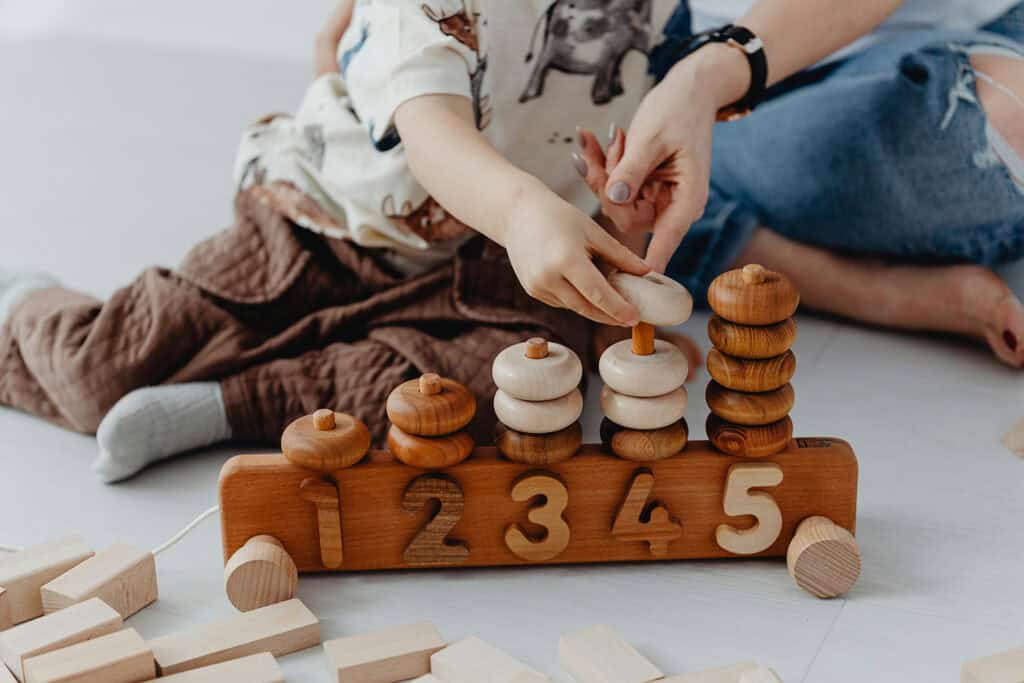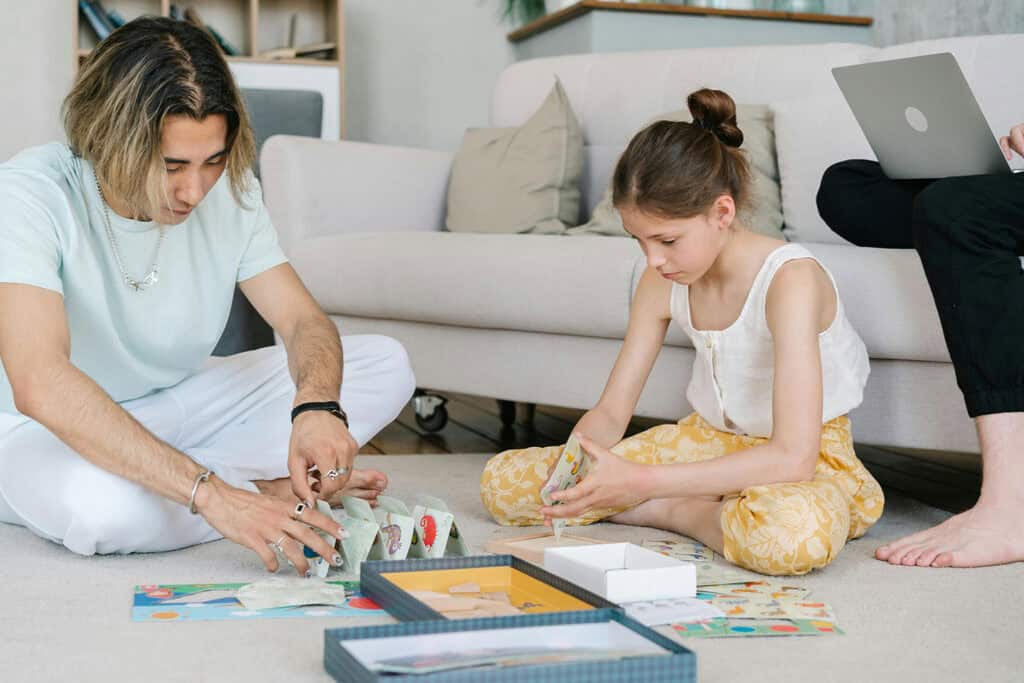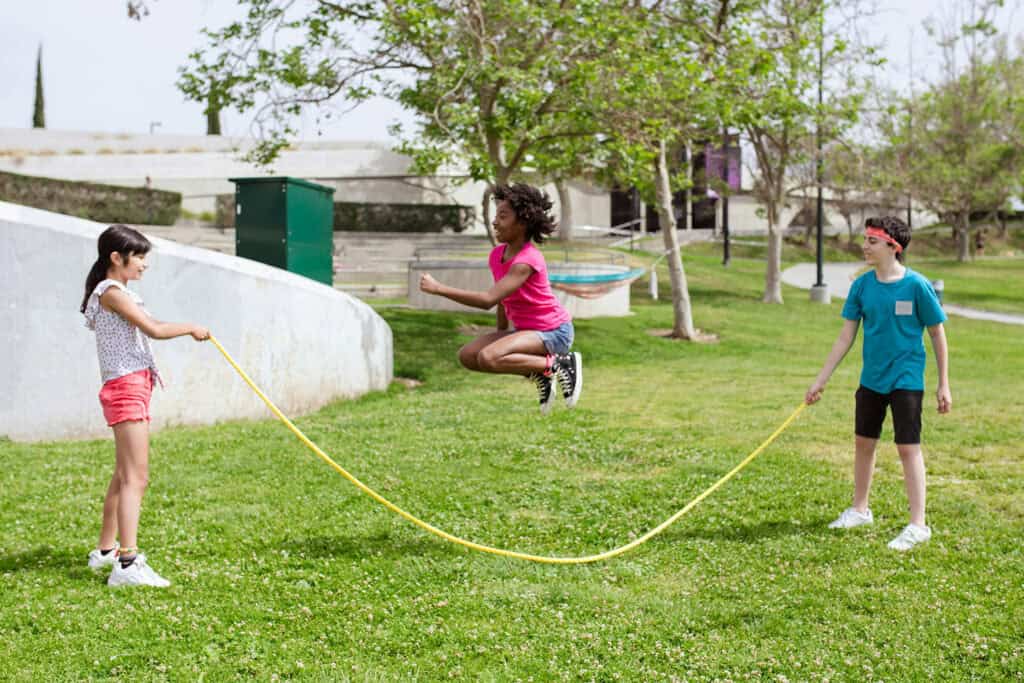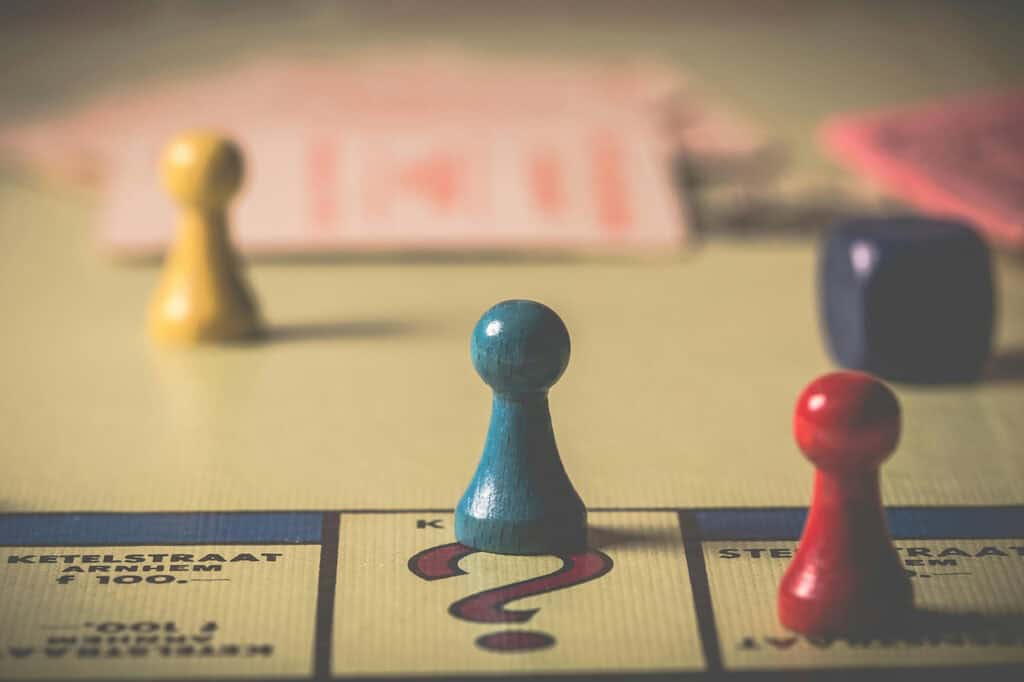
Are you struggling to balance work, family, and personal time, feeling overwhelmed and disconnected? You’re not alone in this quest for a more fulfilling life. Play and leisure activities are essential for revitalizing your spirit and improving your overall well-being.
As your guide, We understand the challenge of fitting these crucial activities into a busy schedule. We’ll show you how to seamlessly integrate various types of play and leisure into your daily routine.
In this article, we’ll explore the significance and benefits of different play and leisure activities, including 5 types such as physical, creative, social, cognitive, and passive pursuits.
From the benefits of physical exercise to the joy of creative hobbies and the relaxation offered by passive leisure, you’ll find a wealth of 50 examples to inspire you.
Discover how these activities can enhance your life, reduce stress, and boost happiness.
Keep reading to unlock the secrets to a more balanced and joyful lifestyle.
Here Are 5 Types of Play and Leisure Activities:
- Physical Play and Active Leisure: Activities like sports and outdoor games that enhance physical fitness and coordination. They promote overall health and well-being through movement and exercise.
- Creative Play and Leisure: Engaging in activities such as drawing, painting, or crafting. These activities stimulate imagination and artistic expression, contributing to emotional and cognitive development.
- Social Play and Leisure: Group activities, such as team sports or social games, that foster interaction and communication with others. These experiences build social skills and strengthen community bonds.
- Cognitive Play: Games and activities that challenge the mind, such as puzzles or strategy games. They help develop problem-solving skills and cognitive abilities.
- Passive Leisure: Low-energy activities like watching movies or reading a book. These provide relaxation and enjoyment while allowing for mental rest and leisure.
See also What Are the Secrets of a Happy Family? 8 Essential Insights
Importance of Play and Leisure Activities
Play and leisure activities are essential for both children and adults, contributing to overall well-being and development. For children, playtime helps them learn, develop abilities, and engage with others.
Adults benefit from leisure time as it provides a break from daily routines, reducing stress and enhancing mental health.
Engaging in entertainment and playtime activities, such as playing games or participating in hobbies, encourages creativity, freedom, and community interaction.
Whether for a young child or an adult, leisure activities promote a balanced lifestyle, allowing individuals to recharge, develop new skills, and enjoy life. Access to these activities is crucial for maintaining mental and emotional health at any age.
Types of Play and Leisure Activities

Types of play and leisure activities encompass a wide range of intrinsically motivated pursuits that provide enjoyment and relaxation. Play can be defined as spontaneous, often creative activities, while leisure refers to more structured recreational activities.
Both are essential for young people and family members, offering opportunities for connection and personal growth. Engaging in these activities answers the question, “Why do we need entertainment?” by promoting well-being.
1. Physical Play and Active Leisure

Physical play and Active Leisure, such as playing ball or engaging in active play, is crucial for healthy development and mental health. It allows children to build social skills by interacting with other children, while also promoting physical fitness.
In free time, these recreational activities contribute to a well-rounded cultural life, offering a balance between physical exercise and the development of essential social and emotional skills.
Here’s an updated list of Physical Activities:
- Obstacle Courses: Encourages problem-solving, agility, and physical strength in a playful environment.
- Skipping: Enhances cardiovascular fitness and coordination, and can be done alone or in groups.
- Tag and Running Games: Boosts cardiovascular health and encourages social interaction.
- Jump Rope: Improves agility and endurance, and can be enjoyed individually or in groups.
- Climbing: Develops strength and problem-solving skills, often in playground settings.
- Dancing: Combines physical activity with creativity, improving flexibility and rhythm.
- Biking: Strengthens leg muscles and provides a sense of freedom and adventure.
- Swimming: Offers a full-body workout and is a fun way to cool off in warm weather.
- Hiking: Promotes endurance, appreciation of nature, and time spent with family or friends.
- Martial Arts: Builds discipline, strength, and self-defense skills.
2. Creative Play and Leisure

Creative play and leisure are essential for both children and adults, offering enjoyment and stress relief. It helps develop social skills, understanding, and cultural awareness while encouraging wellness and mental health.
In school and beyond, leisure activities like creative play help the development of important life skills.
Engaging with other children or adults in these activities promotes a well-rounded, fulfilling life, benefiting both individual and societal well-being.
Here are 10 Creative Play and leisure:
- Digital Creativity: Designing graphics, animations, or coding games offers modern avenues for imaginative expression and technical skills.
- Arts and Crafts: Engaging in activities like painting, drawing, or sculpting fosters creativity and fine motor skills.
- Music: Playing instruments, singing, or composing music enhances cognitive abilities and provides emotional expression.
- Drama: Participating in theatrical performances or role-playing games builds confidence and communication skills.
- Creative Writing: Writing poems, stories, or essays stimulates imagination and language development.
- Storytelling: Creating and sharing stories improves language skills and imagination.
- Building and Construction: Using blocks or modeling materials stimulates problem-solving and spatial awareness.
- Gardening: Designing and tending a garden teaches responsibility and patience while connecting with nature.
- Cooking and Baking: Experimenting with recipes fosters creativity and practical skills in a fun, hands-on way.
- Board Games: Playing strategy or trivia games encourages critical thinking and social interaction.
3. Social Play and Leisure

Social play and Leisure involve interactions among family members or young people through simple games and activities. It includes recreation, which is intrinsically motivated, and defines play as engaging in enjoyable, voluntary activities.
Social play spans different ages, contributing to a child’s day and helping self-esteem. It supports the concept of leisure by promoting connections and enjoyment, enhancing overall well-being for individuals of all ages.
Here are 10 examples of social play:
- Family Game Nights: Playing board games or card games together.
- Team Sports: Participating in soccer, basketball, or volleyball with friends or family.
- Group Playdates: Arranging activities like hide-and-seek or tag among young children.
- Collaborative Arts and Crafts: Working on creative projects together, such as painting or building models.
- Role-Playing Games: Engaging in imaginative scenarios, like pretending to be characters or professionals.
- Community Events: Joining neighborhood fairs, festivals, or organized social gatherings.
- Social Media Challenges: Participating in viral challenges or trends with peers.
- Educational Workshops: Attending group learning sessions or classes on topics of interest.
- Book Clubs: Discussing books or reading materials in a group setting.
- Volunteering Together: Working on community service projects as a group.
4. Cognitive Play

Cognitive play, while not everyone’s preferred fun thing, offers numerous benefits for children. This type of play, which includes problem-solving and intellectual challenges, comes in many forms and helps children develop critical thinking skills.
Engaging in cognitive play during leisure time supports mental growth and problem-solving abilities. Despite its various states and parties, cognitive play is a valuable way for children to spend time and enhance their cognitive skills.
Here are 10 examples of cognitive play activities:
- Brain Teasers: Solving riddles and brain teasers to challenge and expand problem-solving abilities.
- Puzzle Solving: Engaging in jigsaw puzzles or brainteasers to enhance problem-solving skills.
- Strategy Games: Playing chess or checkers that require strategic thinking and planning.
- Logic Games: Solving logic puzzles and riddles to develop critical thinking and reasoning.
- Memory Games: Playing card-matching games to improve memory and concentration.
- Educational Apps: Using interactive apps designed to promote cognitive skills and learning.
- Interactive Storybooks: Exploring storybooks with interactive elements to boost language and comprehension skills.
- Science Experiments: Conducting simple science experiments to explore cause and effect and scientific concepts.
- Math Games: Playing math-based games or solving math puzzles to reinforce numerical skills.
- Coding Activities: Engaging in beginner coding activities to develop logical and problem-solving skills.
5. Passive Leisure

Passive leisure activities are freely chosen and offer significant enjoyment and development. While passive activities involve less active engagement, creative leisure requires participation and a deeper understanding.
Both types help a sense of accomplishment and provide valuable recreation opportunities. Engaging in these activities, whether individually or with parents and society, enhances a person’s overall development and well-being. Access to diverse and interesting options is key.
Here are 10 examples of passive leisure:
- Reading: Enjoying books or magazines for relaxation and escapism.
- Watching Movies: Viewing films for entertainment and relaxation.
- Listening to Music: Experiencing music to improve mood and unwind.
- Watching TV Shows: Following television series for leisure and enjoyment.
- Browsing the Internet: Exploring websites and social media for information or fun.
- Listening to Podcasts: Engaging with audio content on various topics for enjoyment or learning.
- Observing Nature: Simply enjoying the natural environment without active engagement.
- Relaxing in a Spa: Receiving treatments for relaxation and stress relief.
- Sitting in a Park: Spending time in a park for calm and enjoyment.
- Meditating: Practicing mindfulness and deep meditation techniques for mental well-being.
The Role of Technology in Play and Leisure

The role of technology in play and leisure is significant, shaping how we define and engage in recreation. Technology offers children and adults access to a wide range of leisure activities, from video games to virtual sports, enhancing both physical and mental health.
It supports the development of leisure skills and provides opportunities for freely chosen play. Technology can facilitate understanding of complex rules and concepts, helping personal growth and societal engagement.
By making activities more interesting and accessible, technology helps individuals stay involved in their interests and responsibilities, contributing positively to a child’s development and overall well-being.
Here’s a list of 10 examples of digital play and online leisure activities:
- E-books and Audiobooks: Reading or listening to books via Kindle or Audible.
- Video Games: Engaging in various genres from action to strategy, either solo or multiplayer.
- Virtual Reality Experiences: Immersive games and simulations using VR headsets.
- Online Streaming: Watching movies, TV shows, or documentaries on platforms like Netflix or Hulu.
- Social Media Interaction: Connecting with friends and family through platforms like Facebook, Instagram, and Twitter.
- Online Courses and Tutorials: Learning new skills or hobbies through platforms like Udemy or Coursera.
- Digital Art Creation: Drawing, painting, or designing using software like Adobe Photoshop or Procreate.
- Music Streaming: Listening to music via services like Spotify or Apple Music.
- Virtual Fitness Classes: Participating in workout sessions through apps or websites like Peloton or YouTube.
- Online Communities and Forums: Joining discussions and groups on platforms like Reddit or Discord.
Creating a Play and Leisure Plan
- Assess Interests and Preferences: Identify what activities you or the group enjoy and find fulfilling.
- Set Goals: Determine what you want to achieve with your play and leisure time, such as improving skills or simply relaxing.
- Allocate Time: Schedule regular times for play and leisure to ensure consistency and balance with other responsibilities.
- Diversify Activities: Include a mix of passive and active activities to cater to different moods and preferences.
- Consider Accessibility: Choose activities that are easy to access and accommodate any physical or logistical limitations.
- Incorporate Social Interaction: Plan activities that allow for socializing with others to enhance community connections.
- Monitor and Adjust: Regularly evaluate how well the plan is working and make adjustments based on evolving interests and needs.
- Include Technology: Utilize technology where appropriate to enhance or facilitate leisure activities.
- Balance with Responsibilities: Ensure that leisure activities do not interfere with essential responsibilities and commitments.
- Encourage Variety: Rotate activities to keep the experience interesting and engaging.
See also How to Gain Confidence? 7 Powerful Strategies for Lasting Self-Belief
What Are Play and Leisure Activities? A Recap
Play and leisure activities encompass a range of activities that promote enjoyment and relaxation. These activities are crucial for the healthy development of children, young people, and adults, as they help build leisure skills and encourage social interaction.
Recreation refers to activities done during free time that offer relaxation and enjoyment, such as sports, games, and hobbies. For a person, engaging in play and leisure activities contributes to a sense of well-being and helps reduce stress.
Parents play a vital role by providing access and encouraging participation. Understanding the rules and being involved in various activities help a deeper sense of engagement and enjoyment. Overall, play and leisure activities are essential for a balanced, healthy lifestyle.


